28 August (15 August according to Art. Art.) the Orthodox Church commemorates the Assumption of the Mother of God. The Holy Scriptures do not say anything about the transition from the earthly life to the eternal Mother of God. The details of this event are known from the sacred tradition, the iconography of the holiday is also based on it.
As a rule, the iconography of the Assumption is multi-figured. The pure body of the Mother of God rests on the bier, the apostles are nearby. In the center above the body of the Virgin, Jesus Christ stands surrounded by angels and holds the holy soul of the Virgin Mary in his hands (she is depicted as a baby wrapped in a swaddling cloth).
We find the image of the Assumption of the Virgin on church antiquities in the collection of the Chernihiv Historical Museum named after V.V.. Tarnovsky. So on the middle of the wonderful silver plates of five liturgical Gospels of the XVII-XIX centuries. you can see the icon of the Dormition of the Mother of God. All of these exquisite frames are the products of Ukrainian goldsmiths.
The basis of the iconographic composition could be enriched with various details and additional figures. It depended on the plane on which the image was created and, of course, on the talent and professionalism of the master. On three of the above-mentioned Gospels, the iconography of the holiday is supplemented with a plot, where an angel with a flaming sword cuts off the hands of one wicked man - a man named Jephanius. The show says that, that during the transfer of the body of the Mother of God by the apostles through Jerusalem to the tomb, the Jewish high priests decided to disperse the procession, and Yephanius even dared to overturn the bier with the body of the Mother of God, for which he was punished. But immediately sincerely repenting, the latter received a miraculous healing.
The image of the Assumption of the Mother of God can also be found on ancient felons from the museum collection. Yes, on the breastplate of green velvet (inv. № И-1257) mid-18th century, which is lined with silver lace and a quilted ornamental line, we can see the image of the holiday framed by a thick floral ornament. On either side of the main composition are two saints - Saints Anthony and Theodosius of Pechersk. The faces and hands of the figures are picturesque (unfortunately, the entire painting has been lost).
The coat of arms of two more felons of the 2nd century. XVIII ст. from green (inv. No. I-1192) and cherry (inv. No. I-1189) velvet decorated with a haptized composition of the Assumption. Face, the hands and feet of the figures are picturesque.
Old prints from the museum's collection also contain engravings depicting the Assumption of the Virgin Mary. So in the Psalter (inv. No. Al-458) 1767 year of publication (printing house of the Kyiv-Pechersk Holy Dormition Lavra) the reader is first greeted by the image of the holiday we have mentioned. There are a lot of figures on the engraving. The xylograph was not limited to the usual figures of apostles and angels, he depicted members of the early Christian community in Jerusalem, who came to say goodbye to the Mother of God. These are the first Christians, which, certainly, personally knew the Mother of God. Jesus Christ meets the Virgin Mary on the clouds with outstretched hands. The engraving is signed by the master. Its author is Hierodeacon Filaret.
Special attention is drawn to the engraving from the collection of sermons of Chernihiv Archbishop Lazar Baranovych, which is generous with church illustrations, "Trumpets for the Days..." 1674 Dr.. edition (inv. №. Al-966) (printing house of the Kyiv-Pechersk Lavra). On the engraving, the master was able to depict most of the moments, about which the sacred Tradition tells. When the Mother of God expected the transition from earthly life to eternal life, the apostles preached the Gospel in different parts of the Roman Empire and physically could not have time to come to Jerusalem, to say goodbye to the Mother of God. According to the prayers of the Virgin Mary, the Lord created a miracle - in all regions, where the apostles were, angels were sent, who carried them on clouds to Jerusalem. This miracle is depicted by a woodcut on an engraving from a collection of sermons - between heaven and earth on clouds, angels and apostles. In the center of the engraving, the figure of the Virgin with wings is the soul of the Mother of God, that ascends to Jesus Christ. Her Son meets her with a crown in his hands. Together with Christ, the Mother of God is met by a host of saints - "the face of the saints", "girl's face", "martyr's face", "face of the prophet", "angelic face", "face of evangelists" and "face of teachers". A large number of angels and a host of saints form a joint solemn procession, which stretched from the ground to the sky.
The engravings of this publication are always distinguished by their many details, special sophistication, they are filled with deep symbolism and special attention to the smallest details.
Старший науковий співробітник музею,
Candidate of Theology Miroslav May-Boroda
______________
Arendar G. Silver plates of the Gospels of the 17th–19th centuries from the collection of the Chernihiv Historical Museum named after V.V.. Tarnovsky. 2021.
Zaichenko V. Chapts of the XVII-XIX centuries. in the collection of the Chernihiv Historical Museum. 1991.
Polovnikova S., Fed and. Collection Cyrillic old collection of Chernihiv Historical Museum. В.В.Тарновського. 1998.
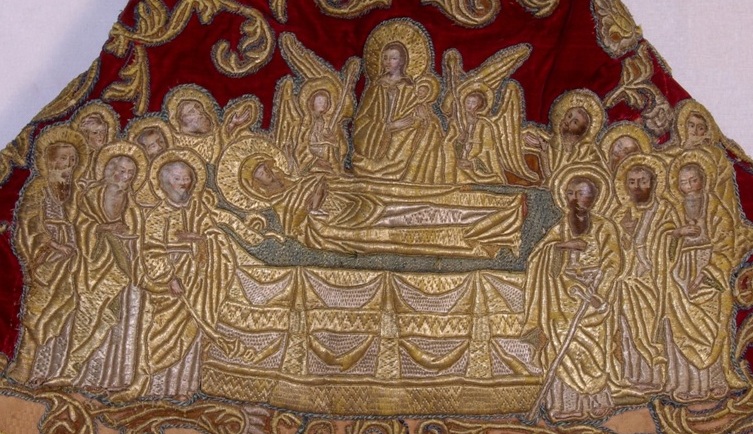
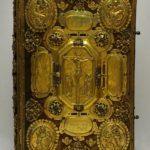
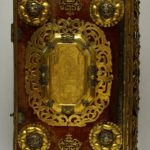
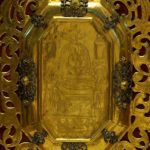
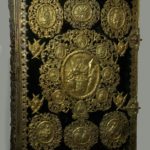

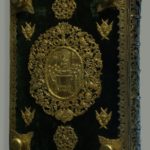

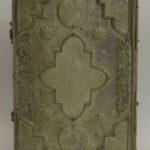
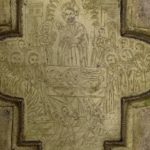
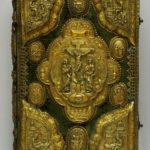

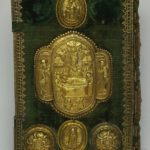
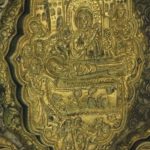
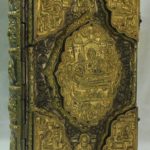
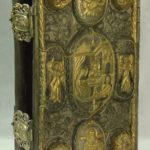

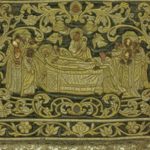
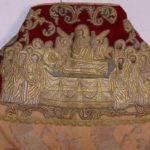
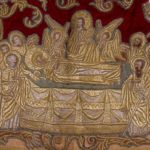
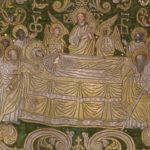
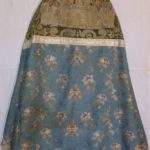

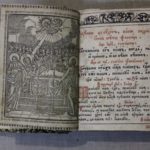






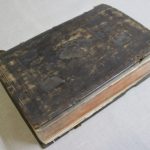
More Stories
Needed, perhaps, God's gift to create beautiful things from clay
Exhibition “In memory of cultural workers...”
Congregant of Metropolitan Peter Mohyla and Hetman Ivan Vyhovsky from the Baturyn Monastery